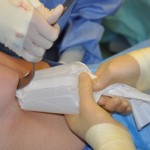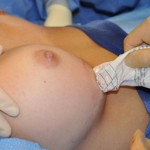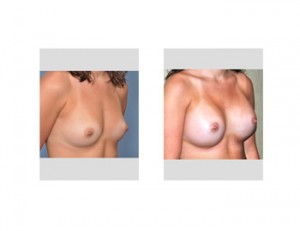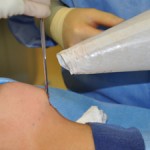Background:The immediate and long-term success of breast augmentation is totally dependent on the use of an implant. Most of the risks of this surgery are implant-related, with infection being the most significant in the short-term and implant rupture in the long-term issue. While both can happen despite the best surgical efforts, the technique of handling the implant during surgery can influence the likelihood of their occurrence.
The traditional insertion of a silicone gel breast implant depends on substantial manual manipulation. The implant is removed from its sterile packaging, often soaking in an antibiotic solution first, and then placed into the breast. Inserting an implant into a breast pocket requires that it pass through an incision. In every primary breast augmentation, the length of the incision is almost always less than the diameter of the implant. Fortunately, silicone gel implants are very malleable and able to be deformed and distorted to fit through a hole that is smaller than it is.
Depending upon the size of the incision and the breast implant, this passage into the patient may go easily or with a lot of difficulty. Easily is defined by having minimal distortion of the implant as it passes into the patient. Difficulty is defined by the implant being severely distorted as it is pushed and poked through a disproportionately small incision. While there is no documented evidence that these insertion maneuvers influence the long-term risk of shell rupture, it would seem logical that it does.
Case Study: This 21 year-old female had long desired breast enhancement since she had been a small B cup since her mid-teen years. As she was about to start her first job after college graduation, she rewarded herself with a long desired breast implant procedure. She desired to be a full C cup.
Under general anesthesia, her breast pockets were developed in the submuscular place through an inframammary or lower breast crease incision. The length of the incision was3.5 cms. The size of the breast pocket was developed with sizers. The implant packages were opened and an antibiotic solution poured over the implants and into the half-shell plastic container. Then using a Funnel device, it was opened and an antibiotic solution poured into the funnel to wet its inner lining.



1)Breast augmentation using the Funnel device offers a ‘no-touch’ technique for implant insertion.
2)The benefits of a ‘no-touch’ breast augmentation technique is a potentially lower risk of infection and less handling of the implant.
3)The Funnel breast augmentation technique exposes the implant to less shearing and distortion forces which likely increases the longevity of the implant before it eventually ruptures.
Dr. Barry Eppley
Indianapolis, Indiana



